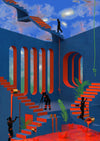
11/2018 Escape visual culture
"To belong nowhere is a blessing," says London-based artist Tishk Barzanji when poetically finding the words to describe one of his latest works. Emotional and atmospheric, Tishk’s work transports you into his mind like a hauntingly beautiful graphic novel. Pure poetry and art, he speaks to people on a compelling level around subjects such as anxiety, depression, and belonging to name a few. His message is deep and straight to the heart.
Art is meant to be intriguing and draw a reaction. It’s true that something can be considered art just from it being labeled as such or a credible figure saying as much. We all like to look at art which is satisfying, much of it is now made for likes on Instagram, but art also possesses the power to be a healer and a force that drives us into our souls–allowing us to wander into something more profound which might have been invisible until now. This is the sensation you get from Tishk’s work and captivating text that accompanies it. Yes, it is beautiful, but it’s the message you take away from it that makes him unique.
Using memories from Kurdistan and what he could see from council estate window while bedridden, Tishk began exploring people who are marginalized or forgotten by society
Tishk is Kurdish. He was born in a region between Iraq, Turkey, and Syria that has denied the ethnic group statehood. He migrated to London in 1997 as a young refugee, much of his childhood remains rooted in his memory as a source of inspiration when creating work. He still remembers his first day in London when a woman approached him and said, "I don't mean to be rude, but what are you people," to which he replied, "We're peculiar, we are Kurdish." Tishk embraced this perception of being ‘different’ from a young age. He was also never bothered about conforming and rushing "out into the night" to rejoice over the weekend arriving. Instead, he preferred to hide in his little utopia because he didn’t want to hide in factories or warehouses.
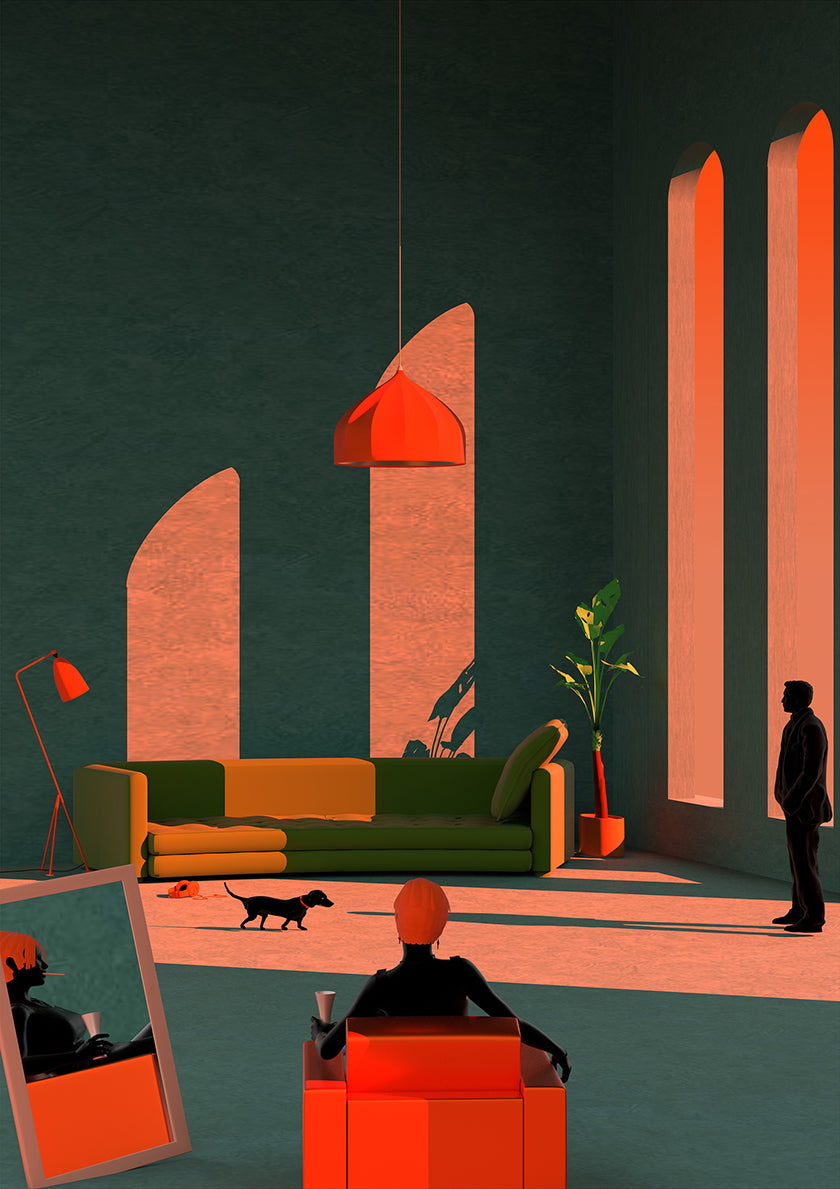
Tishk Barzanji and his family moved to London from Kurdistan in 1997 in search of a new life and opportunities. Although he feels very lucky for everything that has happened since moving to the UK, he still holds onto his childhood memories from Kurdistan and that way of life has been influential within his work.
He was on course to become a physician but suddenly fell ill and ended up being bedridden for most of 2013. An unexpected twist at the time, it left Tishk volatile and he recalls his mother looking into his eyes and thinking "his life was over." A dark and twisted lapse into a parallel life different from his former one drove Tishk into exploring photography, writing, and immersing himself into art-based practices.
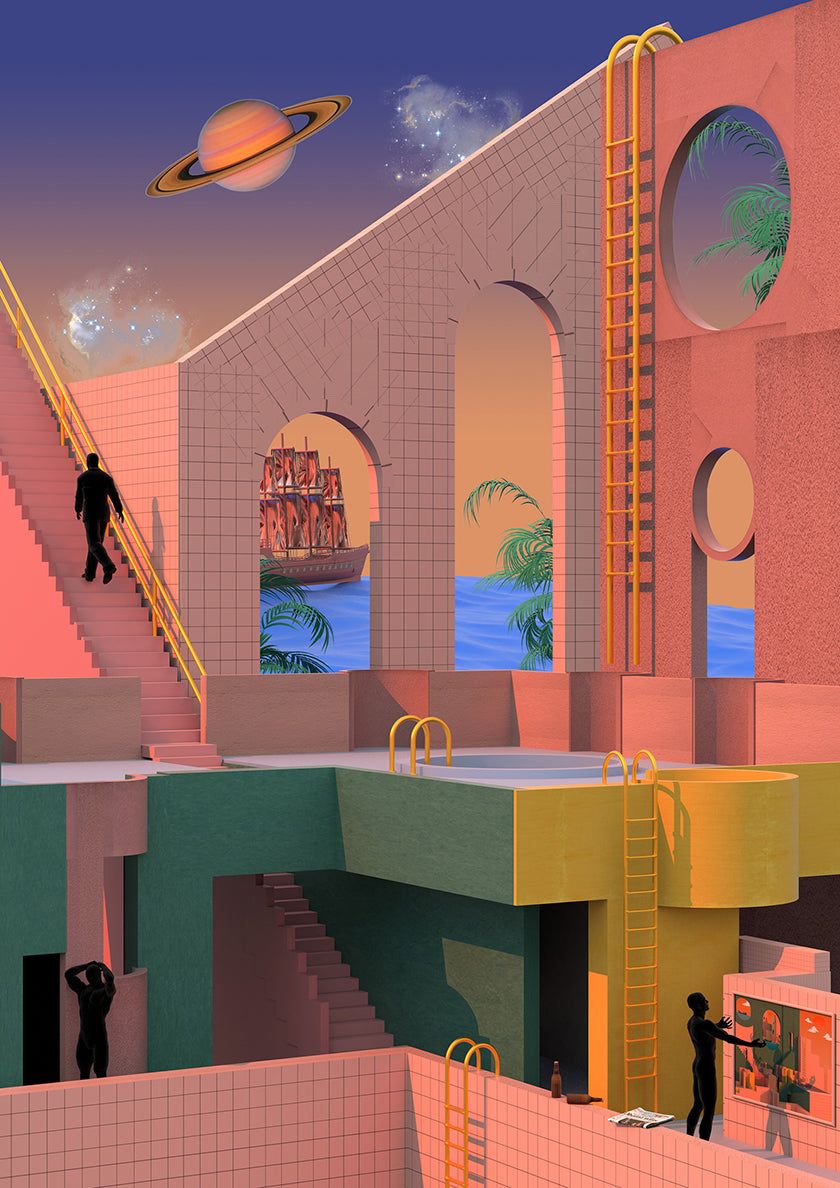
After falling ill while studying at Loughborough University, Tishk had to move back to London and was bedridden for most of 2013. During this time he began exploring his artistic side and observing what he could see from his bedroom. The maze-like utopias are figments of what he could see during this period.
No doubt this was a struggle for him, it was a ghostly period that allowed him to look at the world differently and escape into his mind. His imagination drifted into maze-like universes with black figures. Using memories from Kurdistan and what he could see from his council estate window while bedridden, Tishk began exploring people who are marginalized or forgotten by society. Although it may look like a brutalist utopia from the outset, it symbolizes the heart and soul of the buildings that surround him. We asked him what made him want to tell this story, he told us:
“I tell this story because I lived in this environment so it was natural for me to explore these ideas. It was also an escape for me to be able to tell the story of all people that lived there. I felt connected to everyone.”
Social housing is an emblem of his maze-like work and depictions. Once the answer to the poverty-infested slums of Europe and America, brutalist concrete social housing was considered the future of cities and the answer to much of Europe’s devastation following World War II. At first, they were symbols of the future in Paris, Berlin, London, and Glasgow, but a serious lack of funding lead many projects into a state of disrepair. Over time this created several concentrated slums and ghettos within its concrete parameters, which has been portrayed negatively by the mainstream media.
Telling the story of the people living in these environments and also using his work as a medium to question the future of urban living
Tishk is aware of the media negatively labeling social housing and community-based living spaces as ‘ugly’ and ‘dangerous.’ He told us there’s a bad stigma that derives from the whole place being viewed on the same level. Whereas a house, people would only focus on the house, but with social housing it is different. If something negative occurs the whole community is smeared and labeled under the same umbrella. This outlook is unfair, particularly from the mainstream media, so his work in many ways is giving a voice to those marginalized in these communities.
He said he lost faith in politics a long time ago, he doesn't want to point the finger at culpable politicians, instead, he wants to use his art to build bridges
In his early days he would use acrylics and oil paints, and sketches with watercolor. Never fully satisfied with the end result, Tishk switched to digital to form his visions of escapism. Studying physics made him methodical and structured, this deep thought process makes him highly critical of his own work. This self-assessment, in turn, has allowed him to explore his art more extensively and see how far he can take it.

Tishk was exploring many different art forms whilst bedridden in 2013. From photography to painting to digital visuals, but it was his digital utopias that stood out to him and his friends. He homed in on this particular aspect of his art and started creating different scenarios and backdrops to depict people and situations.
Telling the story of the people living in these environments and also using his work as a medium to question the future of urban living, Tishk is thought-provoking on many levels. You might question whether there is a political message buried in his work, Tishk acknowledges this but is quick to say none of his work has had a political agenda so far. He said he lost faith in politics a long time ago, he doesn't want to point the finger at culpable politicians, instead, he wants to use his art to build bridges.
We asked him how he would describe his work to an outsider, to which he replied, “I would describe it as modern surrealism, escapism is a common theme in my work.” He says it is about the physical world and the structure of nature. Tishk takes walks to analyze shadows and light, he documents small details on the streets. He is hungry to develop his work and does this daily.

His distinctive style and approach have also transferred into the commercial realm, this particular piece was created for AK Dubai.
Putting a label on Tishk would be unfair to him artistically–he’s more than just an illustrator or visual artist or writer. He says what we are currently witnessing is research in his development.
Being alone isn't bad and we shouldn't "cling onto the notion that socializing is therapeutic"
Tishk was an insular person until he was 24-years-old, life changed for him after falling ill. This past and surroundings are evident in his work, but becoming an artist has allowed him to be more open and social as a human being. Using a palette of bold colors to create an abstract and mythical universe, Tishk's work makes you feel all kinds of ways. From running into the oblivion of corridors to the convolution of endless stairways, his work draws emotion and transports you into another place. If it were possible, we'd spend a week wandering around one of his artworks.
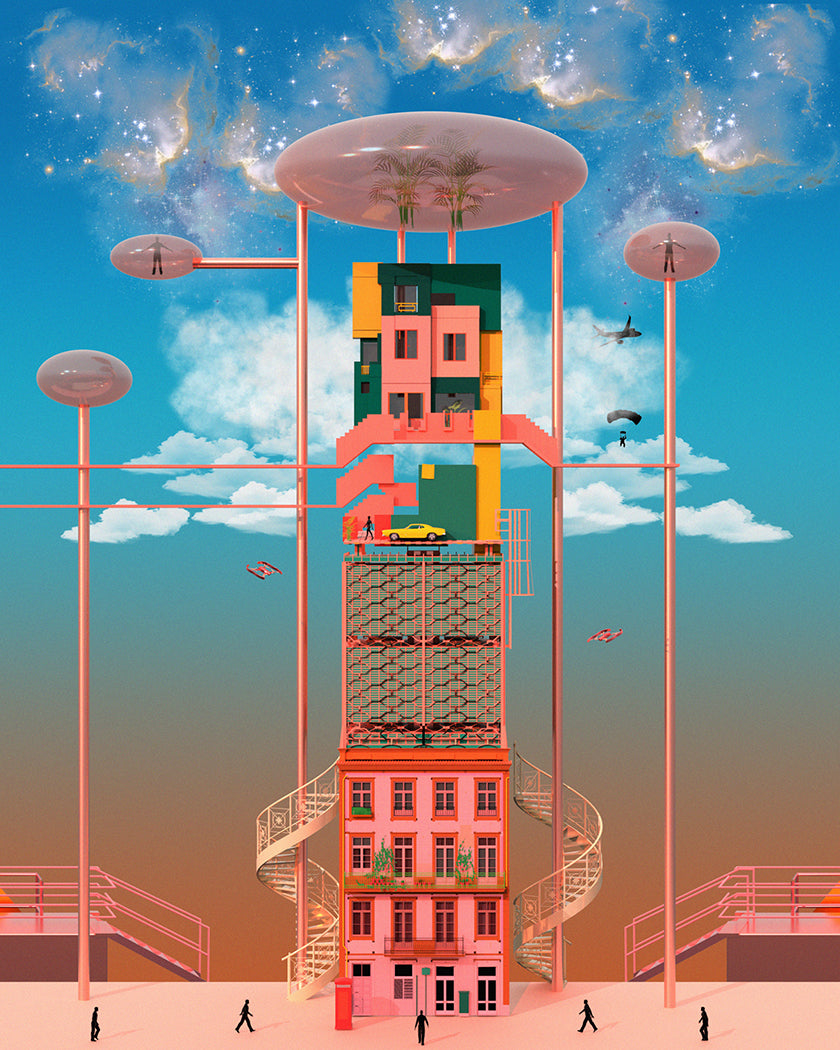
The black figures in his artworks represent people and communities that have been marginalized or forgotten by society. Tishk isn't using work for political purposes, he wants to give a voice to those left behind and also open up a discussion about how communities can live and interact in the future.
His work draws you in and encourages you to share the same emotions. Through the power of spoken word alongside his creations, Tishk shows that you don't have to conform to the mainstream. Being alone isn't bad and we shouldn't "cling onto the notion that socializing is therapeutic." His work cuts deep and encourages us to embrace ourselves, whether an immigrant, a recluse, someone experiencing emptiness, annihilation, or death, it's about discovering feelings profound within you.
Creating these terrains requires a certain type of mind frame. We ask Tishk what soundtrack or genre of music he has on when creating otherworldly utopias. He replied:
"I'm usually listening to Yann Tiersen when working, I like a moody atmosphere, it reminds me of those moments in my life when everything happened so fast, the music slows down those memories. So I can process it. I'm quite nostalgic I guess. I play a lot of jazz, too."
If you are longing for an escape into self-discovery and your soul, try opening one of Tishk's doors.
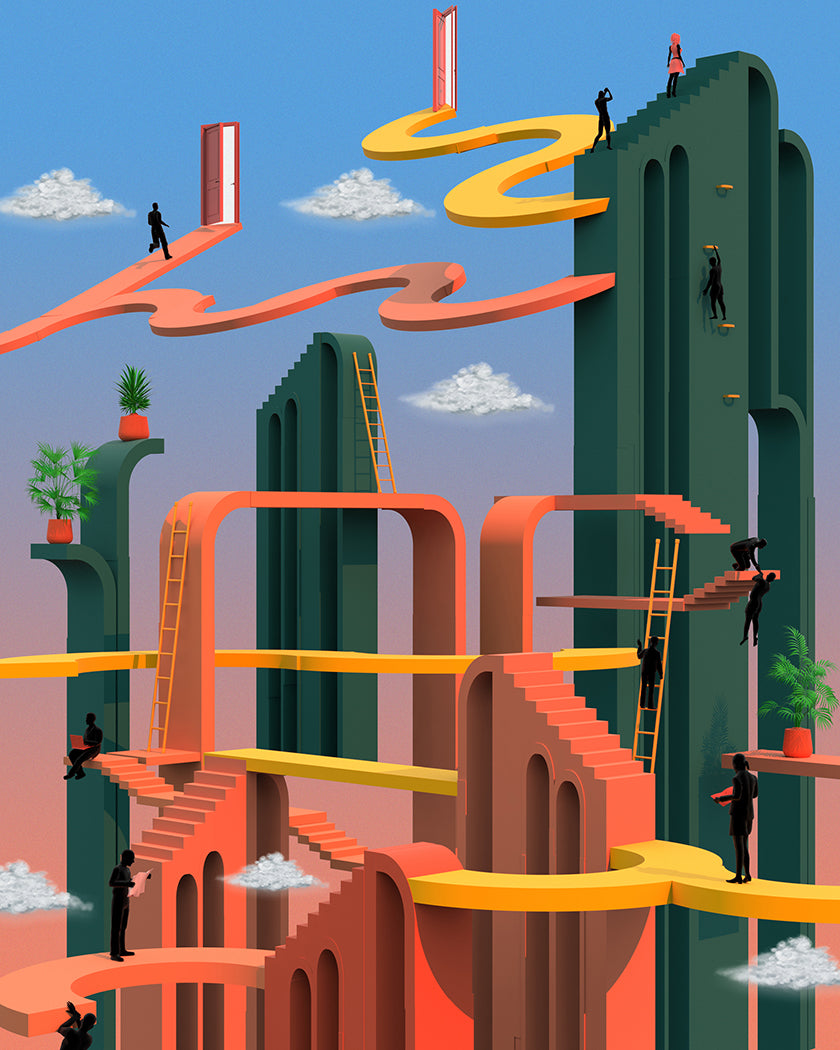
Tishk's text is as compelling as the work itself. This was the caption for this particular piece: "Learn, he says, that there will be hours, days, and months ahead of feeling absolutely terrible and nothing can change that; neither new girlfriends, health professionals, changes of diet, drugs, humility, or money. There is no hurry in your soul. Time means nothing to you."














